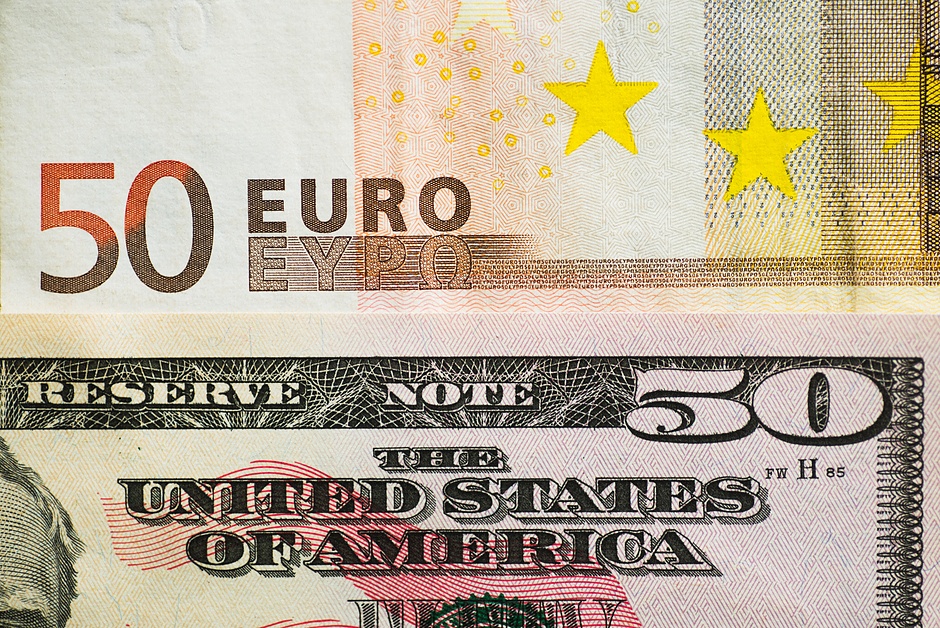EUR/USD Forecast: Euro struggles to find direction as investors await next catalyst
- EUR/USD holds comfortably above 1.0700 following Monday's rebound.
- The near-term technical outlook highlights a lack of directional momentum.
- 1.0760 aligns as next resistance for the pair.

EUR/USD gained traction at the beginning of the week and closed in positive territory on Monday. In the European session on Tuesday, the pair struggles to build on Monday's recovery and trades in a tight channel above 1.0700 as investors refrain from taking large positions, while waiting for the next significant catalyst.
Euro PRICE This week
The table below shows the percentage change of Euro (EUR) against listed major currencies this week. Euro was the strongest against the Swiss Franc.
| USD | EUR | GBP | JPY | CAD | AUD | NZD | CHF | |
|---|---|---|---|---|---|---|---|---|
| USD | -0.39% | -0.45% | -0.19% | -0.31% | -0.34% | -0.13% | -0.04% | |
| EUR | 0.39% | -0.05% | 0.27% | 0.13% | 0.06% | 0.30% | 0.43% | |
| GBP | 0.45% | 0.05% | 0.26% | 0.17% | 0.09% | 0.35% | 0.47% | |
| JPY | 0.19% | -0.27% | -0.26% | -0.10% | -0.11% | 0.10% | 0.16% | |
| CAD | 0.31% | -0.13% | -0.17% | 0.10% | -0.03% | 0.17% | 0.30% | |
| AUD | 0.34% | -0.06% | -0.09% | 0.11% | 0.03% | 0.24% | 0.37% | |
| NZD | 0.13% | -0.30% | -0.35% | -0.10% | -0.17% | -0.24% | 0.12% | |
| CHF | 0.04% | -0.43% | -0.47% | -0.16% | -0.30% | -0.37% | -0.12% |
The heat map shows percentage changes of major currencies against each other. The base currency is picked from the left column, while the quote currency is picked from the top row. For example, if you pick the Euro from the left column and move along the horizontal line to the US Dollar, the percentage change displayed in the box will represent EUR (base)/USD (quote).
The improving risk mood didn't allow the US Dollar (USD) to gather strength during the European trading hours on Monday. In the second half of the day, the mixed action seen in Wall Street helped the currency limit its losses and capped EUR/USD's upside.
Early Tuesday, the Euro Stoxx 50 Index is down more than 0.5% and US stock index futures trade virtually unchanged. Ahead of the first round of French election this weekend, European investors are likely to remain cautious.
The US economic calendar will feature the Conference Board's Consumer Confidence Index for June. In May, the Consumer Confidence edged higher, with the survey highlighting improving labor market conditions. In case the June survey shows a negative shift in labor conditions, given the sharp increases seen in the weekly Initial Jobless Claims data in the last few weeks, the USD could come under renewed selling pressure.
Several Federal Reserve (Fed) officials are also scheduled to speak later in the day. Since the Fed's June policy meeting, some policymakers voiced their willingness to wait for longer before considering a rate cut, while others adopted an optimistic tone on the inflation outlook. The CME Group FedWatch Tool shows that markets are currently pricing in a 32% probability of the Fed leaving the policy rate unchanged in September. Hence, the market positioning suggests that the USD has more room on the upside in case Fed officials deliver hawkish remarks.
EUR/USD Technical Analysis
EUR/USD was last seen trading near 1.0730, where the 50-period Simple Moving Average (SMA) on the four-hour chart meets the Fibonacci 61.8% retracement level of the latest uptrend. Once the pair confirms that level as support, 1.0760 (Fibonacci 50% retracement) could be seen as next resistance before 1.0780 (100-period SMA) and 1.0800-1.0805 (Fibonacci 38.2% retracement, 200-period SMA).
Below 1.0730, 1.0670 (Fibonacci 78.6% retracement) aligns as next support before 1.0600 (static level).
Euro FAQs
The Euro is the currency for the 20 European Union countries that belong to the Eurozone. It is the second most heavily traded currency in the world behind the US Dollar. In 2022, it accounted for 31% of all foreign exchange transactions, with an average daily turnover of over $2.2 trillion a day. EUR/USD is the most heavily traded currency pair in the world, accounting for an estimated 30% off all transactions, followed by EUR/JPY (4%), EUR/GBP (3%) and EUR/AUD (2%).
The European Central Bank (ECB) in Frankfurt, Germany, is the reserve bank for the Eurozone. The ECB sets interest rates and manages monetary policy. The ECB’s primary mandate is to maintain price stability, which means either controlling inflation or stimulating growth. Its primary tool is the raising or lowering of interest rates. Relatively high interest rates – or the expectation of higher rates – will usually benefit the Euro and vice versa. The ECB Governing Council makes monetary policy decisions at meetings held eight times a year. Decisions are made by heads of the Eurozone national banks and six permanent members, including the President of the ECB, Christine Lagarde.
Eurozone inflation data, measured by the Harmonized Index of Consumer Prices (HICP), is an important econometric for the Euro. If inflation rises more than expected, especially if above the ECB’s 2% target, it obliges the ECB to raise interest rates to bring it back under control. Relatively high interest rates compared to its counterparts will usually benefit the Euro, as it makes the region more attractive as a place for global investors to park their money.
Data releases gauge the health of the economy and can impact on the Euro. Indicators such as GDP, Manufacturing and Services PMIs, employment, and consumer sentiment surveys can all influence the direction of the single currency. A strong economy is good for the Euro. Not only does it attract more foreign investment but it may encourage the ECB to put up interest rates, which will directly strengthen the Euro. Otherwise, if economic data is weak, the Euro is likely to fall. Economic data for the four largest economies in the euro area (Germany, France, Italy and Spain) are especially significant, as they account for 75% of the Eurozone’s economy.
Another significant data release for the Euro is the Trade Balance. This indicator measures the difference between what a country earns from its exports and what it spends on imports over a given period. If a country produces highly sought after exports then its currency will gain in value purely from the extra demand created from foreign buyers seeking to purchase these goods. Therefore, a positive net Trade Balance strengthens a currency and vice versa for a negative balance.
Premium
You have reached your limit of 3 free articles for this month.
Start your subscription and get access to all our original articles.
Author

Eren Sengezer
FXStreet
As an economist at heart, Eren Sengezer specializes in the assessment of the short-term and long-term impacts of macroeconomic data, central bank policies and political developments on financial assets.


















